
Homebuilder Tri Pointe Homes (NYSE:TPH) reported Q1 CY2025 results topping the market’s revenue expectations, but sales fell by 23% year on year to $723.4 million. Its GAAP profit of $0.70 per share was 42.9% above analysts’ consensus estimates.
Is now the time to buy Tri Pointe Homes? Find out by accessing our full research report, it’s free.
Tri Pointe Homes (TPH) Q1 CY2025 Highlights:
- Revenue: $723.4 million vs analyst estimates of $712.5 million (23% year-on-year decline, 1.5% beat)
- EPS (GAAP): $0.70 vs analyst estimates of $0.49 (42.9% beat)
- Adjusted EBITDA: $125.7 million vs analyst estimates of $92.9 million (17.4% margin, 35.3% beat)
- Operating Margin: 10%, down from 12.3% in the same quarter last year
- Backlog: $1.31 billion at quarter end, down 33% year on year
- Market Capitalization: $2.83 billion
“Tri Pointe delivered solid first quarter financial results, either meeting or exceeding all our stated guidance,” said Doug Bauer, Tri Pointe Homes Chief Executive Officer.
Company Overview
Established in 2009 in California, Tri Pointe Homes (NYSE:TPH) is a United States homebuilder recognized for its innovative and sustainable approach to creating premium, life-enhancing homes.
Home Builders
Traditionally, homebuilders have built competitive advantages with economies of scale that lead to advantaged purchasing and brand recognition among consumers. Aesthetic trends have always been important in the space, but more recently, energy efficiency and conservation are driving innovation. However, these companies are still at the whim of the macro, specifically interest rates that heavily impact new and existing home sales. In fact, homebuilders are one of the most cyclical subsectors within industrials.
Sales Growth
Reviewing a company’s long-term sales performance reveals insights into its quality. Even a bad business can shine for one or two quarters, but a top-tier one grows for years. Unfortunately, Tri Pointe Homes’s 6.1% annualized revenue growth over the last five years was mediocre. This fell short of our benchmark for the industrials sector and is a poor baseline for our analysis.
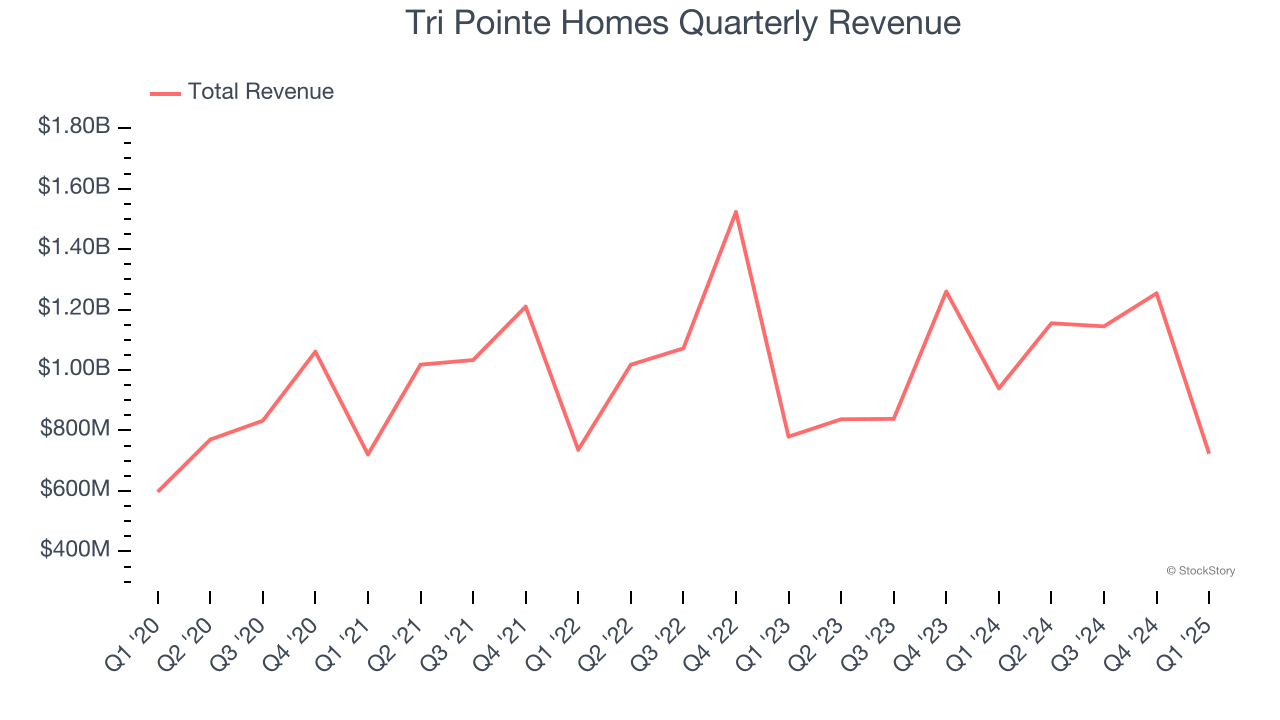
Long-term growth is the most important, but within industrials, a half-decade historical view may miss new industry trends or demand cycles. Tri Pointe Homes’s performance shows it grew in the past but relinquished its gains over the last two years, as its revenue fell by 1.3% annually. 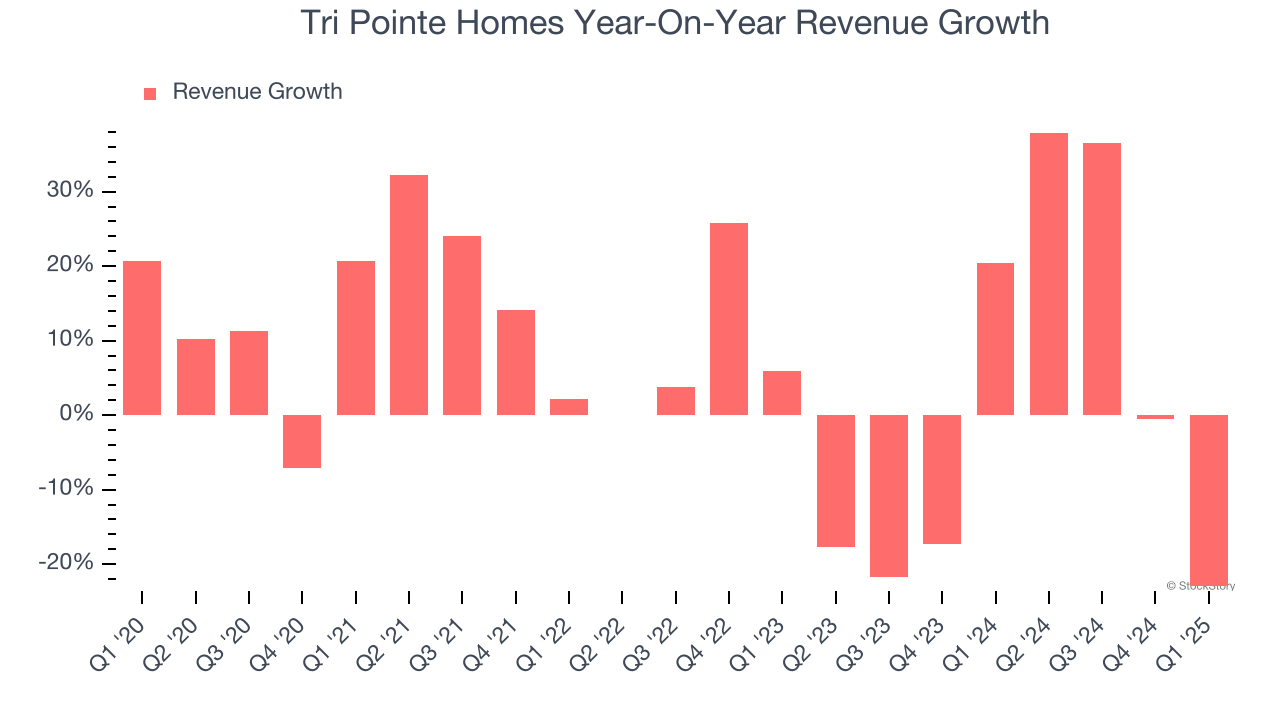
Tri Pointe Homes also reports its backlog, or the value of its outstanding orders that have not yet been executed or delivered. Tri Pointe Homes’s backlog reached $1.31 billion in the latest quarter and averaged 6.9% year-on-year declines over the last two years. Because this number is lower than its revenue growth, we can see the company hasn’t secured enough new orders to maintain its growth rate in the future. 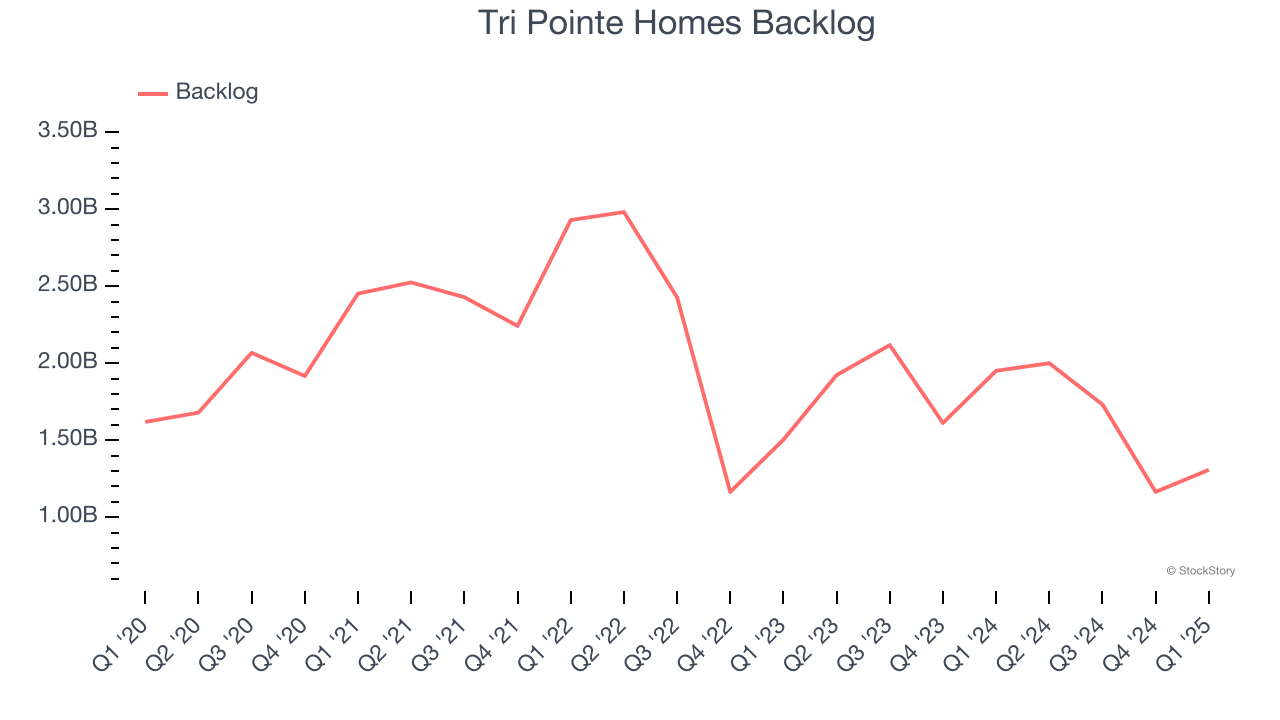
This quarter, Tri Pointe Homes’s revenue fell by 23% year on year to $723.4 million but beat Wall Street’s estimates by 1.5%.
Looking ahead, sell-side analysts expect revenue to decline by 11.6% over the next 12 months, a deceleration versus the last two years. This projection is underwhelming and implies its products and services will see some demand headwinds.
Unless you’ve been living under a rock, it should be obvious by now that generative AI is going to have a huge impact on how large corporations do business. While Nvidia and AMD are trading close to all-time highs, we prefer a lesser-known (but still profitable) stock benefiting from the rise of AI. Click here to access our free report one of our favorites growth stories.
Operating Margin
Tri Pointe Homes has been an efficient company over the last five years. It was one of the more profitable businesses in the industrials sector, boasting an average operating margin of 14.4%. This result was particularly impressive because of its low gross margin, which is mostly a factor of what it sells and takes huge shifts to move meaningfully. Companies have more control over their operating margins, and it’s a show of well-managed operations if they’re high when gross margins are low.
Looking at the trend in its profitability, Tri Pointe Homes’s operating margin might fluctuated slightly but has generally stayed the same over the last five years. This raises questions about the company’s expense base because its revenue growth should have given it leverage on its fixed costs, resulting in better economies of scale and profitability.

This quarter, Tri Pointe Homes generated an operating profit margin of 10%, down 2.4 percentage points year on year. Since Tri Pointe Homes’s operating margin decreased more than its gross margin, we can assume it was less efficient because expenses such as marketing, R&D, and administrative overhead increased.
Earnings Per Share
Revenue trends explain a company’s historical growth, but the long-term change in earnings per share (EPS) points to the profitability of that growth – for example, a company could inflate its sales through excessive spending on advertising and promotions.
Tri Pointe Homes’s EPS grew at an astounding 21.3% compounded annual growth rate over the last five years, higher than its 6.1% annualized revenue growth. However, this alone doesn’t tell us much about its business quality because its operating margin didn’t expand.
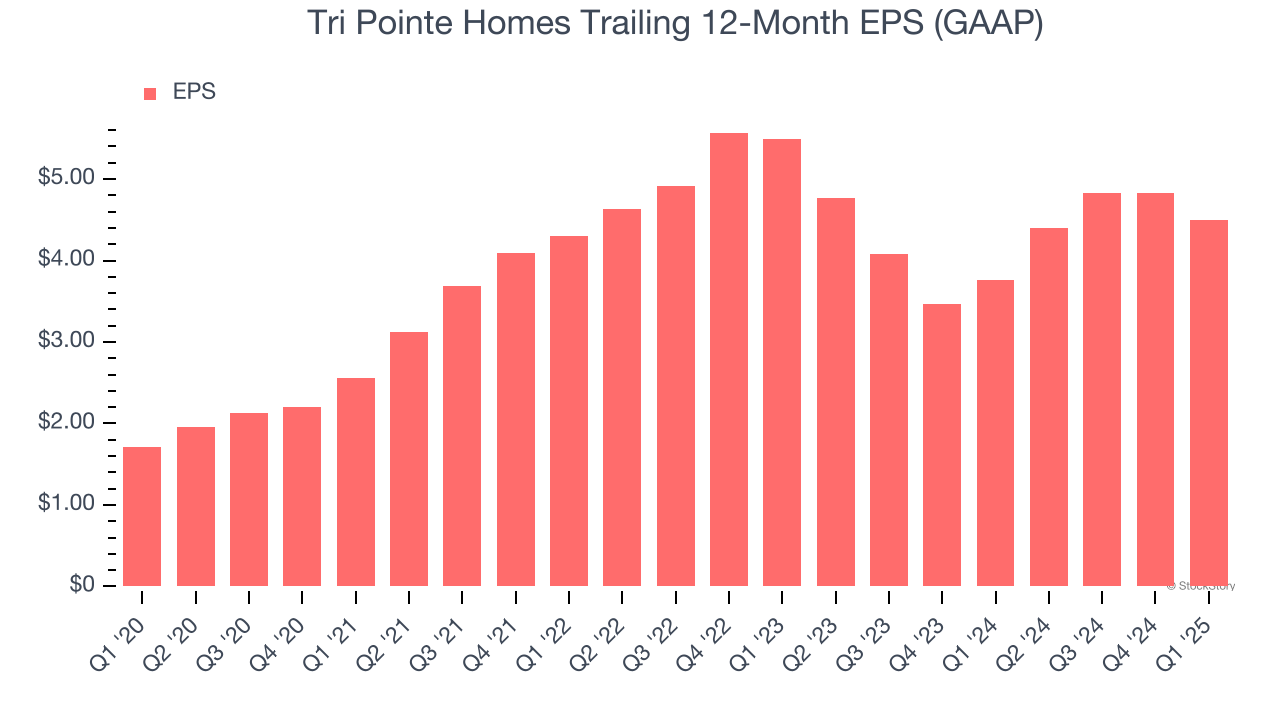
We can take a deeper look into Tri Pointe Homes’s earnings quality to better understand the drivers of its performance. A five-year view shows that Tri Pointe Homes has repurchased its stock, shrinking its share count by 31.8%. This tells us its EPS outperformed its revenue not because of increased operational efficiency but financial engineering, as buybacks boost per share earnings. 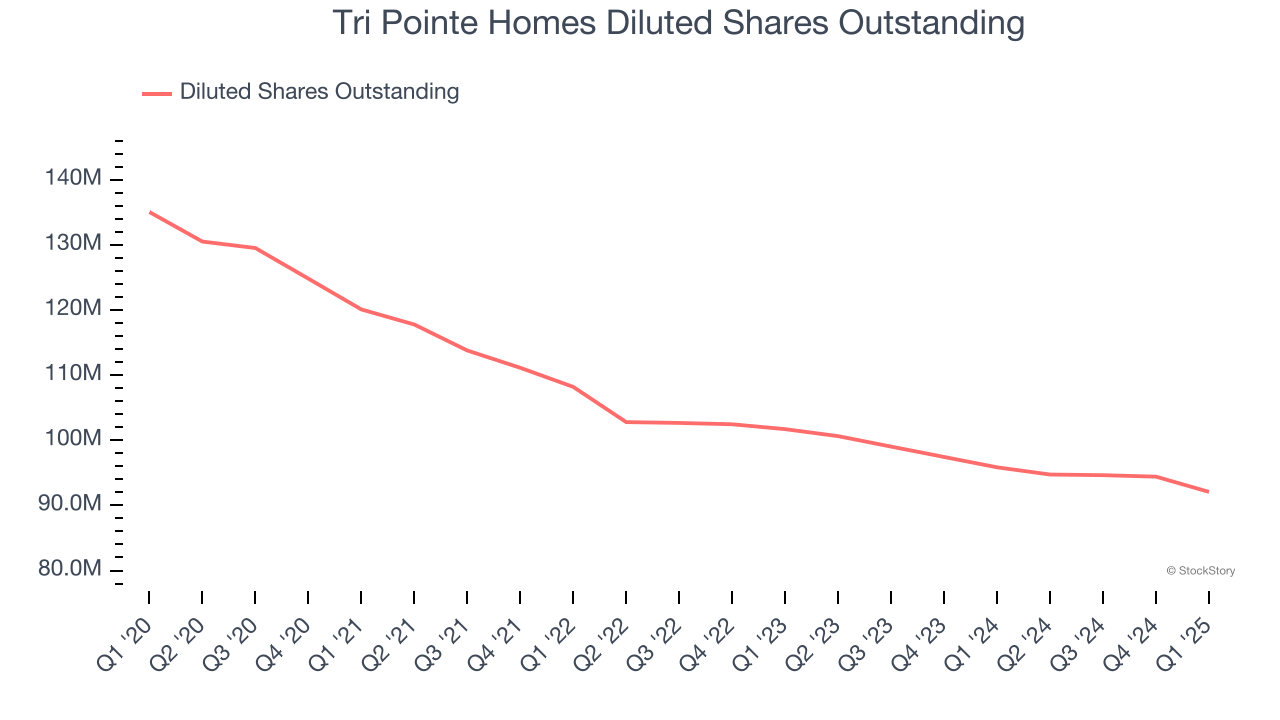
Like with revenue, we analyze EPS over a more recent period because it can provide insight into an emerging theme or development for the business.
For Tri Pointe Homes, its two-year annual EPS declines of 9.6% mark a reversal from its (seemingly) healthy five-year trend. We hope Tri Pointe Homes can return to earnings growth in the future.
In Q1, Tri Pointe Homes reported EPS at $0.70, down from $1.03 in the same quarter last year. Despite falling year on year, this print easily cleared analysts’ estimates. Over the next 12 months, Wall Street expects Tri Pointe Homes’s full-year EPS of $4.50 to shrink by 31.1%.
Key Takeaways from Tri Pointe Homes’s Q1 Results
We were impressed by how significantly Tri Pointe Homes blew past analysts’ EPS expectations this quarter. On the other hand, its backlog missed, and this shortfall in a key leading indicator of future revenue seems to be weighing on shares. The stock traded down 4.3% to $29.51 immediately following the results.
Big picture, is Tri Pointe Homes a buy here and now? We think that the latest quarter is only one piece of the longer-term business quality puzzle. Quality, when combined with valuation, can help determine if the stock is a buy. We cover that in our actionable full research report which you can read here, it’s free.
